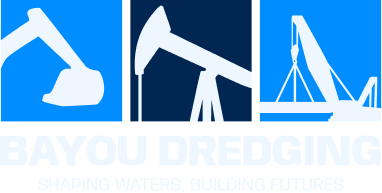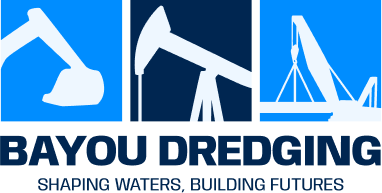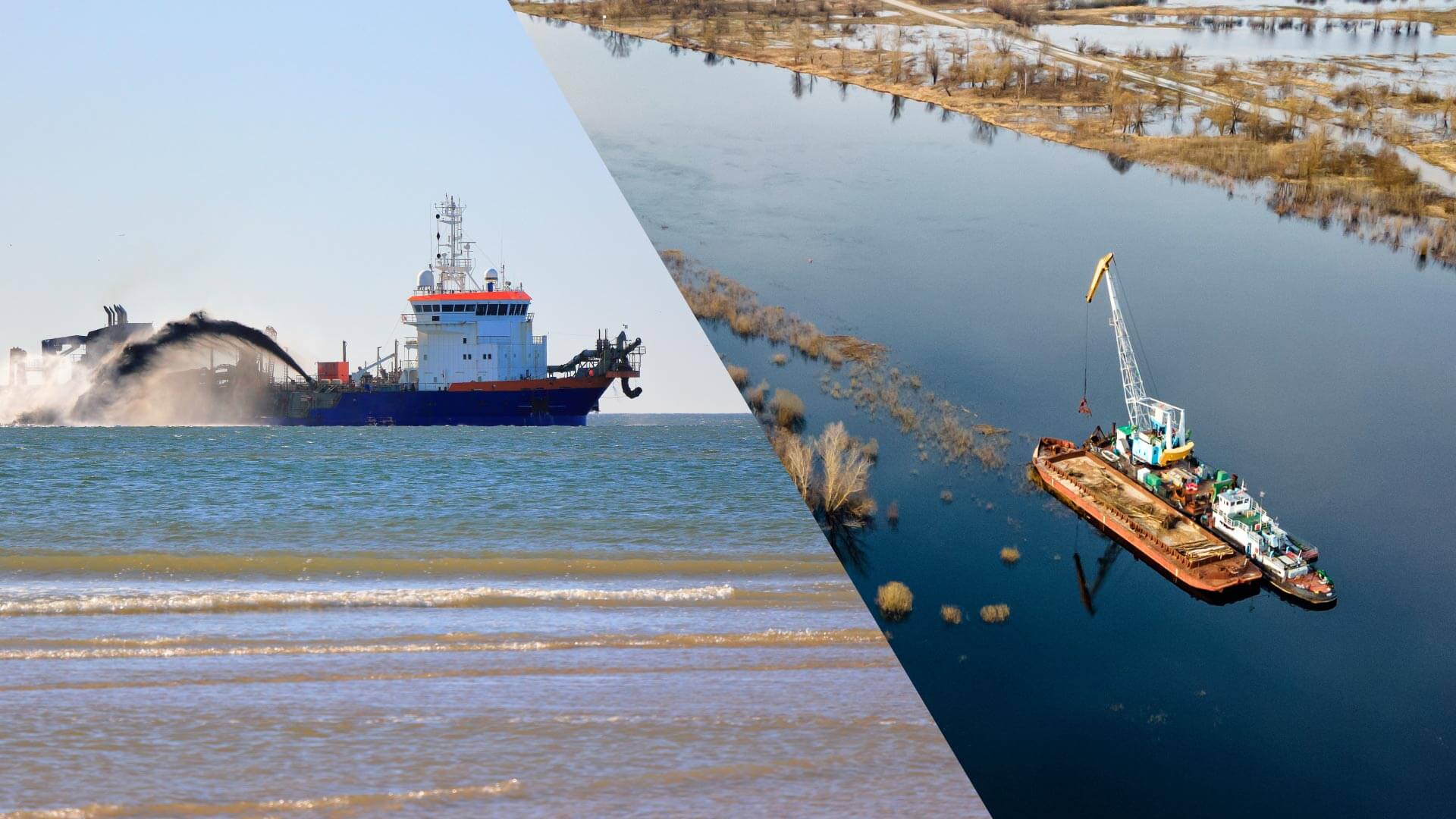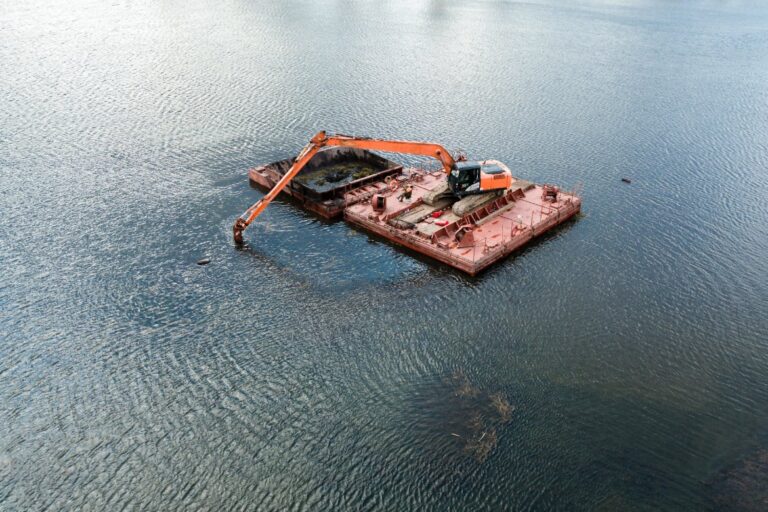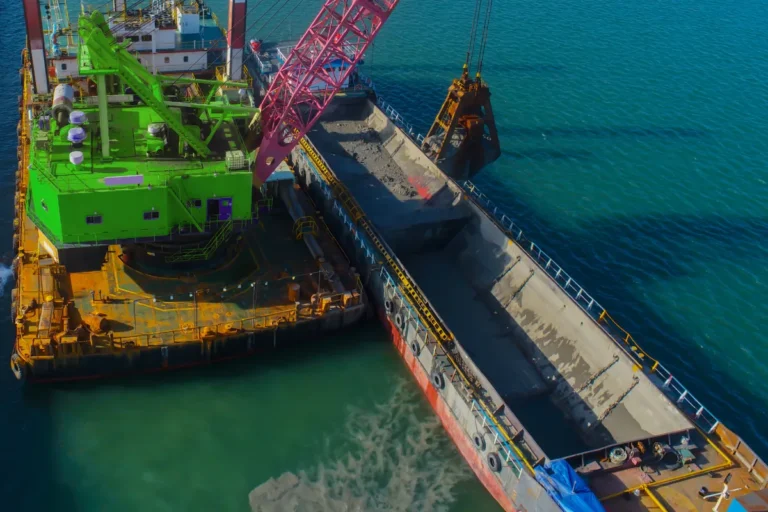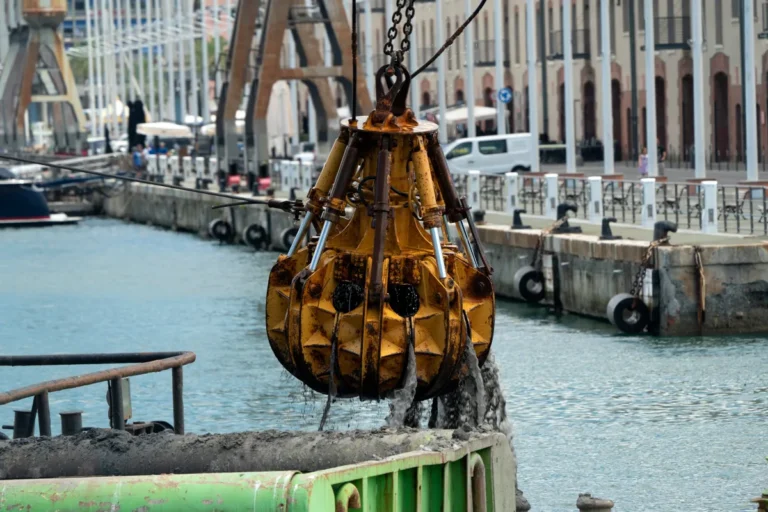Dredging is crucial for maintaining the functionality and safety of waterways, ports, and other aquatic infrastructure. Removing accumulated sediments, debris, and other materials ensures navigational channels remain clear, protects marine ecosystems, and supports industries such as shipping, mining, and flood management. Without regular dredging, waterways can become obstructed, leading to costly delays, environmental challenges, and potential safety hazards.
Among the various dredging techniques available, two primary methods stand out: hydraulic dredging and mechanical dredging. Hydraulic dredging, a highly efficient method, uses advanced technology to create a slurry of sediment and water, which is then transported through pipelines. This approach is powered by specialized hydraulic dredging equipment, such as cutter suction dredges and submersible pumps, designed to handle large-scale sediment removal with minimal disruption. In contrast, mechanical dredging relies on heavy machinery to physically scoop or grab sediment, making it ideal for precise operations in confined spaces. While both methods have distinct advantages, the choice between them often depends on the project’s scale, environmental factors, and desired outcomes.
This article will explore the hydraulic dredging process, its benefits, and how it compares to mechanical dredging, helping you decide which method is best suited for your dredging needs.
What is Hydraulic Dredging?
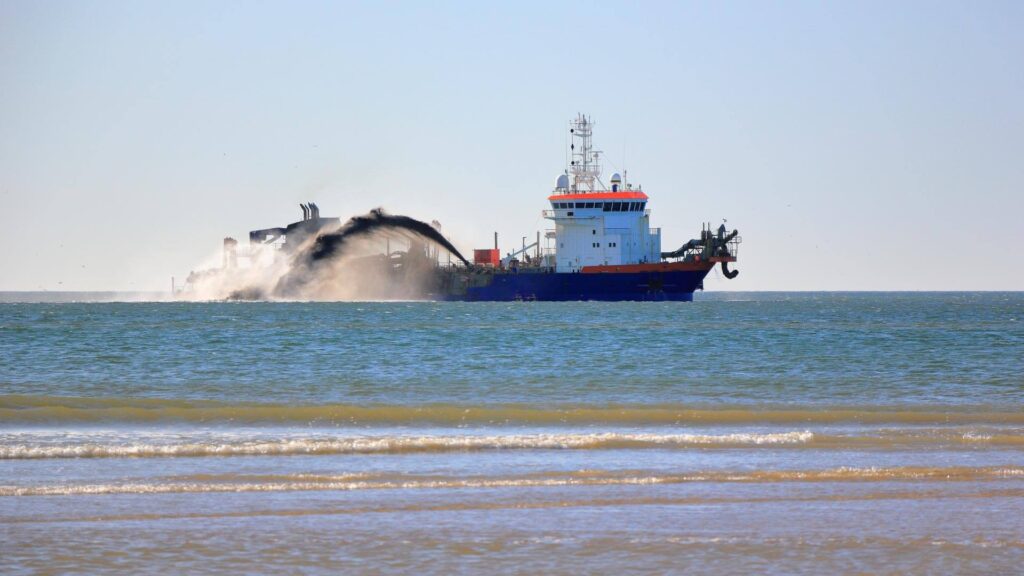
Definition and Overview
Hydraulic dredging is an advanced method for removing and transporting sediments from the bottom of waterways, lakes, reservoirs, and other aquatic environments. This process uses suction to excavate material, turning it into a slurry of sediment and water. The slurry is then transported through pipelines to designated disposal sites or areas requiring land reclamation. Known for its efficiency and adaptability, hydraulic dredging is the preferred choice for large-scale projects such as harbor deepening, mining, and flood mitigation.
Hydraulic Dredging Process
The hydraulic dredging process is both efficient and streamlined, making it suitable for projects requiring continuous sediment removal. Here’s how it works step by step:
- Excavation:
Specialized equipment, such as a cutter suction dredge, loosens sediment from the seabed or riverbed. The cutter head rotates to break up the material, ensuring efficient suction. - Slurry Creation:
The loosened sediment is mixed with water, creating a slurry that is easy to transport. This step is essential for maintaining a consistent flow through the pipeline. - Sediment Transport:
The slurry is pumped through pipelines using hydraulic dredging equipment such as submersible pumps or booster pumps. This setup allows for the transport of sediment over long distances with minimal interruption. - Disposal of Reclamation:
Once the slurry reaches its destination, the sediment is separated from the water and either disposed of or used for land reclamation, beach nourishment, or other purposes.
Role of Hydraulic Dredging Equipment
The success of hydraulic dredging heavily relies on the use of specialized hydraulic dredging equipment. Key machinery includes:
- Cutter Suction Dredges: Essential for breaking up compacted sediments and ensuring efficient suction.
- Submersible Pumps: Used to transport the sediment slurry over long distances, ensuring consistent flow and minimal sediment settling.
- Booster Pumps: Installed along pipelines for extended transport needs, improving the efficiency of the hydraulic dredging process.
Key Advantages of Hydraulic Dredging
Hydraulic dredging offers several advantages that make it a popular choice for large-scale and complex projects:
- High Efficiency:
Hydraulic dredging can quickly remove large volumes of sediment, making it ideal for projects involving vast areas or significant sediment accumulation. - Continuous Sediment Removal:
Unlike mechanical dredging, which involves repeated lifting and scooping, hydraulic dredging is a continuous process that reduces downtime and improves overall efficiency. - Long-Distance Transport Capability:
The ability to transport sediment through pipelines over extended distances is a significant advantage, especially for projects requiring material relocation far from the dredging site.
What is Mechanical Dredging?
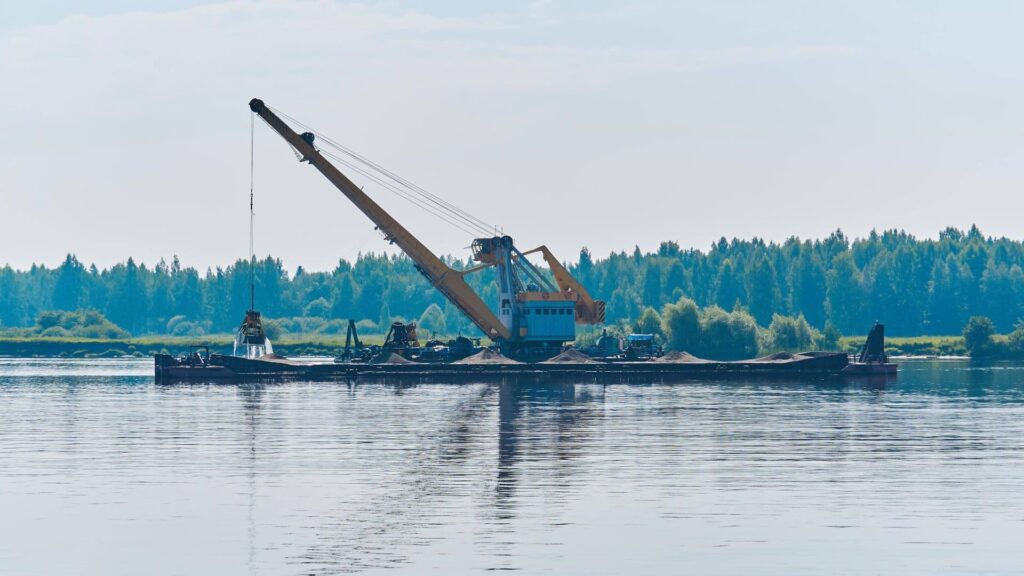
Definition and Overview
Mechanical dredging is a sediment removal method that uses heavy machinery to scoop or grab material from the bottom of water bodies. Unlike hydraulic dredging, which relies on suction and pipelines, mechanical dredging employs equipment such as clamshell buckets, backhoes, and excavators to lift and transport sediment to barges or disposal sites. This method is particularly effective for precise excavation in smaller or confined areas where pinpoint accuracy is required.
While mechanical dredging differs fundamentally from hydraulic dredging, the two methods are often used together in projects where versatility and adaptability are critical.
Mechanical Dredging Process
The mechanical dredging process is straightforward yet highly effective for specific scenarios. Below is an overview of common techniques:
- Clamshell Dredging:
A clamshell bucket is lowered into the sediment to scoop it up. This method is suitable for dredging deep or narrow areas, such as ports and harbors. - Backhoe Dredging:
Backhoes mounted on barges are used to excavate material. This technique provides excellent control and is ideal for precision dredging near structures like bridges or docks. - Excavator Dredging:
Excavators scoop sediment, similar to backhoe dredging, but they are often employed in shallow waters or along shorelines.
Each method involves transporting the excavated sediment to a barge or other transport medium, where it is moved to disposal or reclamation sites.
Key Advantages of Mechanical Dredging
- Precision in Sediment Removal:
Mechanical dredging offers unparalleled accuracy, making it ideal for projects requiring careful sediment management or work near sensitive structures. - Effective for Smaller or Confined Areas:
Unlike hydraulic dredging, mechanical dredging excels in tight or constrained spaces such as marinas, canals, or urban waterways.
While mechanical dredging is particularly useful in specific scenarios, it can also complement the hydraulic dredging process by handling precision tasks that hydraulic dredging equipment may not be optimized for. This combination of methods ensures comprehensive and efficient sediment removal tailored to each project’s unique needs.
Key Differences Between Hydraulic and Mechanical Dredging
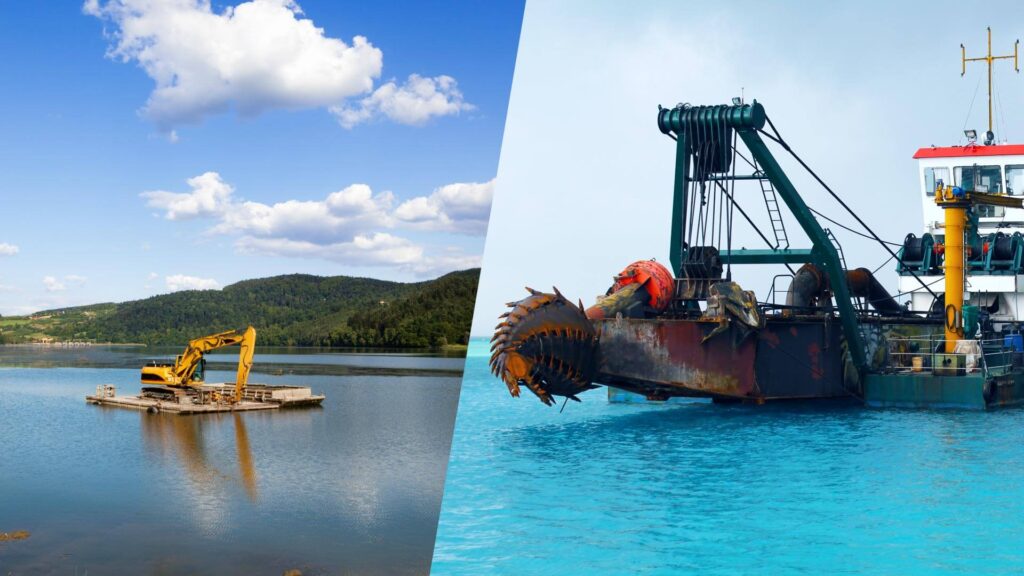
Understanding the differences between hydraulic dredging and mechanical dredging is crucial for selecting the most efficient and cost-effective method for your project. Both techniques have their strengths, and choosing the right one depends on the scale, precision requirements, and environmental considerations of the project. Below are the key factors that set these methods apart:
Efficiency
- Hydraulic Dredging: Highly efficient for large-scale operations, particularly when continuous sediment removal is required. It is ideal for projects involving vast areas such as ports, rivers, and reservoirs.
- Mechanical Dredging: Best suited for smaller or precise sediment removal tasks, making it an excellent option for targeted dredging in confined spaces.
Suitable Project Sizes
- Hydraulic Dredging: Designed for extensive areas that require large volumes of sediment to be removed quickly and efficiently.
- Mechanical Dredging is more practical for smaller-scale projects or situations requiring high precision, such as marinas, docks, or urban waterways.
Cost-Effectiveness
- Hydraulic Dredging: More cost-effective for large-scale projects due to its ability to move significant sediment volumes with minimal manual intervention.
- Mechanical Dredging: Offers cost advantages for small-scale or short-term projects, especially when the required equipment is readily available.
Environmental Impact
- Hydraulic Dredging: Generally less disruptive to aquatic ecosystems as it operates as a continuous process. However, fine sediments may be stirred up during the dredging process, which could impact water quality.
- Mechanical Dredging: Due to the physical presence and operation of heavy machinery, this may have localized environmental impacts, especially in confined areas.
Versatility
- Hydraulic Dredging: Provides excellent versatility for transporting sediment over long distances through pipelines, making it ideal for land reclamation and projects far from disposal sites.
- Mechanical Dredging: Offers superior precision and control, making it the preferred choice for projects near sensitive structures such as bridges, piers, or industrial facilities.
Equipment Needs
- Hydraulic Dredging requires specialized equipment, such as cutter suction dredges, submersible pumps, and booster pumps. These tools are essential for creating and transporting sediment slurry over long distances.
- Mechanical Dredging utilizes heavy machinery, such as clamshell buckets, backhoes, and excavators, to scoop and load sediment onto barges or transport vehicles.
When to Use Hydraulic Dredging
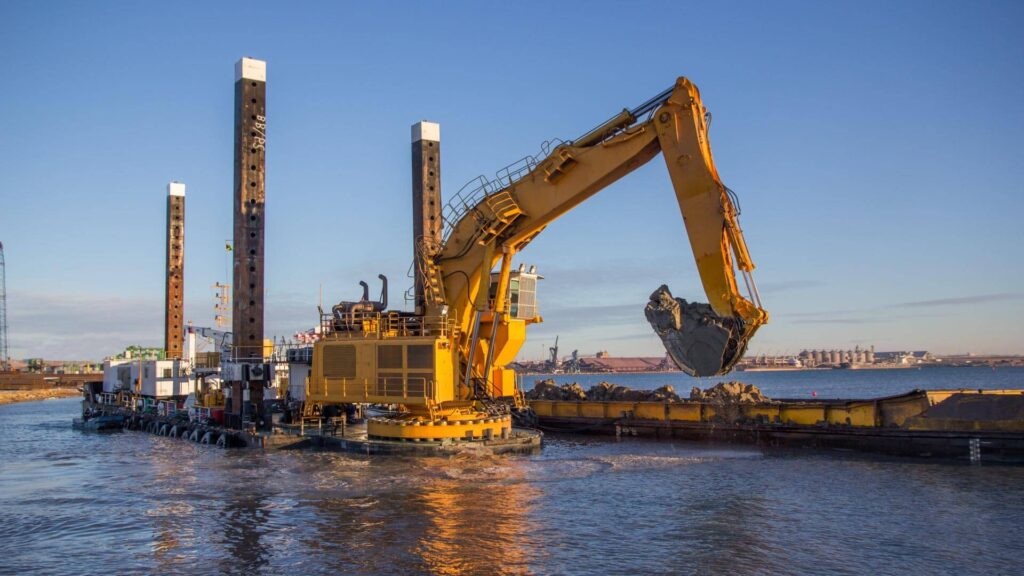
Hydraulic dredging is a powerful and efficient method for sediment removal, especially when tackling large-scale projects or those requiring long-distance transport of materials. Its versatility and effectiveness make it a preferred choice across various industries. Below, we outline the best applications and scenarios where hydraulic dredging excels.
Best Applications for Hydraulic Dredging
- Large-Scale Projects
Hydraulic dredging is ideal for extensive operations such as port deepening, riverbed maintenance, and lake restoration. Its ability to handle massive volumes of sediment quickly and efficiently makes it the go-to solution for large-scale water infrastructure projects. - Long-Distance Transport of Dredged Materials
One key advantage of the hydraulic dredging process is its capacity to transport sediment over long distances through pipelines. This feature is particularly beneficial for projects requiring the relocation of materials to distant disposal or reclamation sites. - Projects with Minimal Environmental Impact Constraints
Hydraulic dredging is designed to operate continuously, minimizing disruption to aquatic ecosystems. While some fine sediments may be stirred up during the process, the overall impact is generally less than that of mechanical methods, especially when appropriate hydraulic dredging equipment is used.
Industries That Benefit Most from Hydraulic Dredging
- Mining
Hydraulic dredging is commonly used in mining operations to extract valuable materials such as sand, gravel, and minerals. Its efficiency in creating and transporting slurry makes it a vital tool in this industry. - Flood Control
Regular dredging is essential for maintaining rivers’ and reservoirs’ capacity to manage floodwaters. Hydraulic dredging ensures these waterways remain clear and functional, reducing the risk of overflow during heavy rains. - Reservoir Maintenance
Sediment accumulation can reduce reservoir capacity and efficiency over time. Hydraulic dredging offers a practical solution for removing sediment and restoring reservoir functionality without extensive manual labor or costly equipment setups.
When to Use Mechanical Dredging
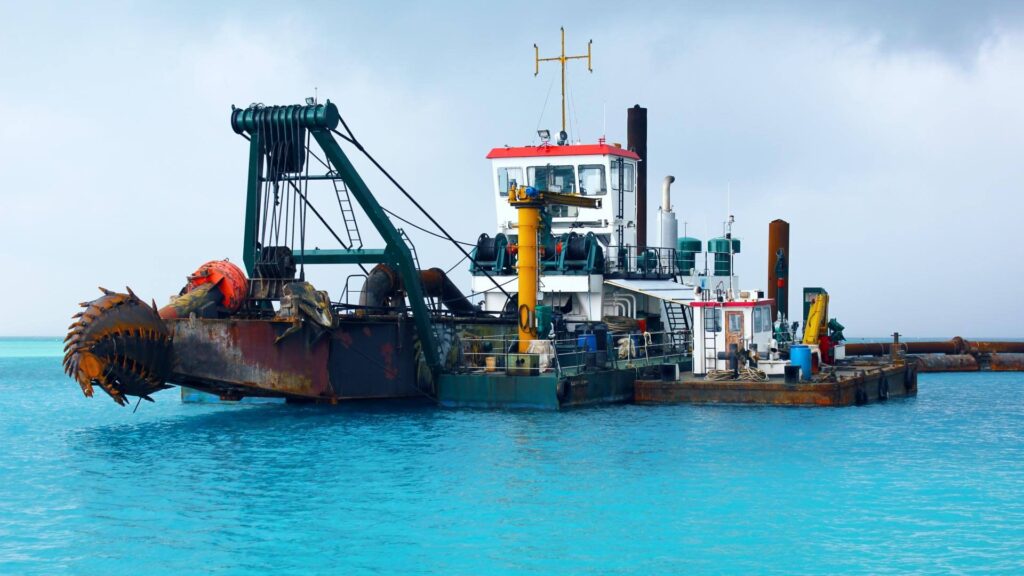
While hydraulic dredging is highly efficient for large-scale projects, mechanical dredging stands out in specific scenarios where precision and localized sediment removal are key. Mechanical dredging uses heavy machinery to scoop or grab materials, making it ideal for smaller, confined, or highly targeted projects. Below are the best applications for mechanical dredging and why it may be the right choice for certain projects.
Ideal Scenarios for Mechanical Dredging
- Small or Confined Areas
Mechanical dredging is the preferred method for projects in tight spaces, such as marinas, docks, and urban waterways. Its equipment, including clamshell dredges and excavators, allows for precise sediment removal in areas where hydraulic dredging equipment may be too large or less practical. - Removal of Debris or Specific Materials
Mechanical dredging is the ideal choice for projects requiring the removal of specific materials like rocks, debris, or large objects. Its ability to handle heavier and non-sediment materials provides a level of versatility that complements the hydraulic dredging process in mixed-material environments. - High-Precision Requirements
Mechanical dredging excels in projects requiring high accuracy, such as dredging near bridge piers, industrial facilities, or other sensitive structures. The controlled operation of mechanical equipment ensures minimal disruption to surrounding areas, making it a preferred method for precision work. - Urban or Densely Populated Environments
In urban waterways, where access and environmental constraints are significant, mechanical dredging effectively removes sediment without the extensive setup required for hydraulic dredging equipment. Its smaller operational footprint makes it particularly suitable for these environments.
Factors to Consider in Choosing the Best Method
Selecting the right dredging method for your project is essential for achieving optimal results while maintaining cost efficiency and compliance with environmental standards. Whether considering hydraulic dredging or mechanical dredging, the decision should be based on several key factors. Below, we break down the most important aspects to consider.
1. Project Scope and Size
- Hydraulic Dredging: Best suited for large-scale projects such as port deepening, riverbed maintenance, and reservoir dredging. The continuous operation of the hydraulic dredging process ensures that vast amounts of sediment can be removed efficiently.
- Mechanical Dredging is ideal for smaller, more localized projects where precision is required, such as dredging marinas, docks, or urban waterways.
2. Type of Sediment or Material Being Dredged
- Hydraulic Dredging Excels at handling fine sediments, mud, and sand, especially when long-distance transport of dredged materials is necessary. The ability to pump sediment as a slurry makes this method efficient for materials that mix well with water.
- Mechanical Dredging: More effective for removing debris, rocks, or heavier materials that are less suited to the hydraulic dredging process.
3. Environmental Regulations and Concerns
- Hydraulic Dredging: Typically less disruptive to aquatic ecosystems due to its continuous operation. However, it may stir up fine sediments, requiring proper planning to mitigate water quality issues. Utilizing specialized hydraulic dredging equipment can help minimize environmental impacts.
- Mechanical Dredging: Offers greater control over sediment removal, making it a better option near sensitive structures or in environments with stringent ecological restrictions.
4. Budget and Timeline
- Hydraulic Dredging is more cost-effective for large-scale projects because it can handle significant volumes of sediment with minimal manual intervention. However, initial setup costs for pipelines and hydraulic dredging equipment can be higher.
- Mechanical Dredging: Lower upfront costs for smaller projects, but the process can be more time-consuming for larger operations, leading to higher overall expenses.
5. Accessibility of the Dredging Site
- Hydraulic Dredging requires adequate space for pipeline setup and equipment staging areas. It is ideal for open waterways or projects with unrestricted site access.
- Mechanical Dredging: Better suited for confined spaces or urban environments where access is limited. Its equipment is more adaptable to tight or irregular spaces.
Environmental Considerations
Dredging plays a vital role in maintaining waterways and supporting infrastructure, but it can significantly impact aquatic ecosystems if not managed carefully. Understanding the environmental effects of hydraulic and mechanical dredging and implementing sustainable practices ensures projects are completed responsibly. Below, we explore the environmental considerations associated with hydraulic dredging, its sustainable practices, and ways to mitigate potential risks.
Impact of Hydraulic Dredging vs. Mechanical Dredging on Aquatic Ecosystems
- Hydraulic Dredging
- Advantages:
Hydraulic dredging generally causes less disruption to aquatic environments because it operates as a continuous process. The use of suction and pipelines reduces the need for large machinery directly in the water, minimizing physical disturbances. - Potential Risks:
However, the hydraulic dredging process can stir up fine sediments, leading to increased turbidity and potential impacts on water quality. This may affect aquatic organisms by reducing sunlight penetration and smothering habitats.
- Advantages:
- Mechanical Dredging
- Advantages:
Mechanical dredging offers precise sediment removal, which can be beneficial in areas with fragile ecosystems or near critical structures. - Potential Risks:
Heavy machinery used in mechanical dredging can disrupt the seabed, creating localized habitat disturbances. Additionally, the equipment’s physical presence in the water may affect marine life behavior.
- Advantages:
Sustainable Practices in Hydraulic Dredging Processes
- Sediment Management
Proper assessment and planning can ensure that dredged materials are disposed of or reused sustainably, such as in land reclamation or beach nourishment projects. - Minimizing Turbidity
Advanced hydraulic dredging equipment, such as cutter suction dredges with precision controls, helps minimize sediment resuspension duringredging. - Monitoring and Compliance
Regular environmental monitoring during the hydraulic dredging process ensures compliance with regulatory standards and helps identify any potential impacts on ecosystems early. - Eco-Friendly Innovations
Incorporating technologies like environmentally friendly dredge heads or sediment curtains can further reduce ecological disturbances.
Mitigating Environmental Risks with Proper Hydraulic Dredging Equipment and Techniques
- Specialized Equipment
The choice of hydraulic dredging equipment is critical for mitigating environmental risks. Tools like submersible pumps and eco-dredging heads are designed to operate efficiently while reducing habitat disruption. - Careful Project Planning
Conducting detailed environmental impact assessments (EIAs) before starting dredging ensures that sensitive areas are identified and avoided or managed appropriately. - Sediment Containment Measures
Techniques such as deploying turbidity curtains or containment barriers can help control the spread of disturbed sediments, protecting nearby ecosystems.
Conclusion: Which Method is Best?
Choosing between hydraulic dredging and mechanical dredging depends on your project’s specific requirements. Hydraulic dredging is ideal for large-scale operations, offering efficient sediment removal and long-distance transport with specialized equipment like cutter suction dredges. It excels in applications such as port deepening, flood control, and reservoir maintenance. In contrast, mechanical dredging is better suited for small, confined areas or projects requiring high precision, such as marinas, docks, and urban waterways.
Understanding the hydraulic dredging process and its capabilities ensures informed decision-making and optimal project outcomes. While hydraulic dredging is unmatched in scale and efficiency, mechanical dredging provides precision and adaptability. By evaluating your project’s scope, sediment type, and environmental considerations, you can select the best method or even combine both to achieve the desired results while maintaining environmental and cost efficiency.
